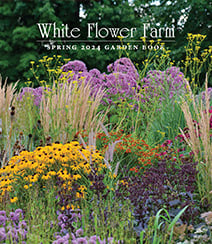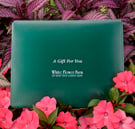Growing Chlorophytum comosum (Spider Plant)
Latin Name Pronunciation: klor-fie'tum koh-mohs'um
The Spider Plant (Chlorophytum comosum), native to South Africa and West Africa, is a favorite indoor plant that can be grown outdoors in shade once the weather warms. Its arching, lance-shaped leaves and quick growing habit make it a perfect choice for annual container collections, too. Long, cascading stems produce small white flowers followed by tiny plantlets (young plants) that hang in attractive clusters at the ends of the stems.
Light/Watering: Grow in partial shade in moist, well-drained soil.
Fertilizer/Soil and pH: Use a soil-based potting mix and apply a balanced liquid fertilizer monthly throughout the growing season.
Pests/Diseases: Virtually pest-free but can be prone to leaf tip burn due to underfeeding, dry soil, or too much sun.
Companions: Combine with other shade-loving flowering annuals, such as Begonias.
End-of-Season Care: In all but the mildest winter climates (plants are hardy to Zone 9 [20°F]), bring plants indoors before frost and overwinter in bright, indirect light. Water sparingly in winter. Set back outdoors after the danger of frost has passed in spring.


